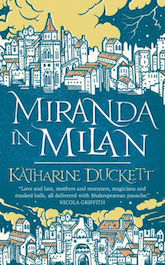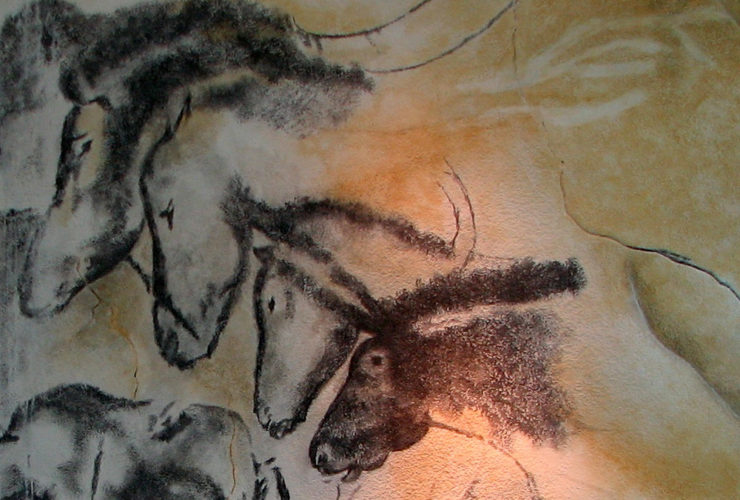Long before modern science cracked the genetic code, animal breeders had figured out that you can breed for specific traits. They watched to see what different individuals would produce in combination with others, kept the offspring who came closest to what they were looking for, crossed those to each other in hopes of enhancing the desired traits even further. They discovered that breeding relative to relative could have excellent results, but also that it could concentrate bad traits as well as good ones. And they learned to cull the undesirables—remove them from the breeding roster either through sterilization or by adding them to the food supply.
Humans have been altering their environment for millions of years. That includes the animals (and plants) that they’ve chosen to domesticate. Horses are no exception. In fact, as the Nature documentary on the horse shows, on every continent but Antarctica, people have been breeding horses and horses have been evolving to fit both their environment and their humans’ needs, whims, and fashions.
Without human intervention, the horse would probably have become extinct in Europe and Asia as it did in North America. An animal of this size needs a lot of grass forage to survive. As grasslands gave way to forests after the last Ice Age, and then as human expansion took over what was left, there was less and less room for large horse herds.
But when the horse proved useful for transport as well as food, and became essential to the great human sport and pastime of attacking and killing each other, humans found ways to keep their equine companions fed and cared for. They bred selectively for a docile temperament, a heightened ability to tolerate confinement, and to various degrees in various regions and uses, strength, endurance, and speed. And, because humans love the pretty as well as the killing, they bred for looks, too.
Selective breeding is one of humans’ major contributions to the animal world. In the wild, animals sort themselves out in Darwinian fashion. The fit survive. The unfit and the unlucky don’t. Function rules. Form is secondary.
Buy the Book


Miranda in Milan
Nobody is out there telling that stallion with the big ole head not to breed that mare with the even bigger ole head because the foal could be downright fugly. He most probably is not breeding his relatives—horses in the wild tend to avoid this—but he isn’t thinking about aesthetics, either. The mare who lets the stallion cover her (what, you thought he was in control?) just knows that she’s in the mood and he’s the boy of the moment. Maybe he won her from a weaker stallion, maybe she just likes him better. Approximately eleven months and a week later, if all goes well, there will be another horse in the world, and he will survive if he’s fit, and die if he’s not.
When humans get into the picture, the parameters change. The mare may not choose the stallion she’s bred to, and the stallion covers whatever the human brings him. Even if he’s lucky enough to live where he has free access to a herd of mares, rather than only getting near one under human control, those mares are chosen for him.
He’s also quite unlikely to have to fight for his conjugal rights. By the time he’s allowed to breed, he’s been selected for it. There may have been dozens of colts in that foal crop, and only a handful, if that many, are kept entire. The rest will be gelded and diverted into riding, driving, and so on. Only the best, by the standard of the breed or type, will go on to sire the next generation.
The standard for mares tends to be less stringent. The logic is that a stallion can sire hundreds of foals in a year, but a mare can only produce one. This makes a great mare all the more valuable, but a lesser mare can do much less damage to the breed than an inferior stallion.
(Now of course with improved technology including cloning and in vitro fertilization, the game has changed. But these alternatives are difficult and expensive, and accordingly rare.)
A lot of the things breeders take as gospel are actually based on generations of “we always do that.” One stallion, multiple mares, for example. In the wild, herds will fall into this configuration, but there are also herds of unattached stallions, any one of whom may make a move to claim his own mares. A herd stallion may have one or more secondary stallions in his orbit, too, who will breed his female relatives.
What this does is keep the gene pool fresh by mixing it up. Genetic diversity, in a phrase. When humans went from large, diverse herds with numerous stallions to selecting just a few to pass on their genes, the gene pool began to shrink. There were fewer options, and therefore less to choose from—and it became harder to eliminate genetic problems.
Breeders in various parts of the world were able to recognize this and take steps to protect their stock. Even while they continued to cull the males, they made efforts to diversify the female lines. In the Lipizzan for example, a very small breed with under 4500 members, there are eight approved stallion lines but over twenty mare lines, with the option for a few major stud farms to add more; smaller breeders are required to work with the established lines, and are enjoined from inbreeding and close-in linebreeding.
The Thoroughbred by contrast, though significantly larger in terms of numbers, is actually more restricted genetically: Not only is the studbook closed to outcrosses, but “star syndrome,” the tendency of breeders to gravitate toward a handful of very popular or successful stallions, concentrates the bloodlines even further. There’s no set process in place to keep the gene pool from collapsing on itself.
It gets complicated. There are breeds, which are bloodline-based, and types, which are based on a standard. Some breeds allow outcrosses, but those will not be admitted as purebreds. The Arabian breed takes pride in the claim that an Arabian will improve whatever it’s bred to—meaning usually that the cross gains in beauty, spirit, sturdiness, and stamina. It’s also extremely strict about purity within the breed. That beautiful, elegant, totally Araby horse may be 63/64ths Arabian, but the registry won’t take it as pure. It’s registered as a Half-Arabian.
Other breeds allow outcrosses of certain breeds. An Appaloosa may be a large part Quarter Horse, or a racing Quarter Horse may be mostly Thoroughbred. The idea is to enhance the traits the breed values at the time—stock type in the Appaloosa, speed in the racing Quarter Horse—and to open up the gene pool to horses that fit the conception of what the breed should be.
Then there are types like the European Warmblood. These breed to a standard of performance, with frequent evaluation and testing and—again—strict culling of males. There may be restrictions on the breeds of horses accepted into the Verband, but the emphasis is on what the horse can do rather than on what its bloodlines are. It doesn’t matter if he’s the son of champions; if he doesn’t meet the standard, he won’t be approved for breeding. Whereas in a breed, say the Arabian, if his parents are Arabians, then so is he. He doesn’t have to meet any further criteria to be registered, or in fact to breed, if his owners are so inclined.
No breeder ever sets out to produce inferior stock. At the very least she wants to reproduce the parents, and at best she hopes to improve on them—to come closer to whatever ideal she’s breeding for. That can be anything from greater speed to a prettier head, from superior jumping ability to an exceptionally beautiful color. It’s a gamble, but the more she understands about the practical applications of genetics, the more likely she is to win.
Judith Tarr is a lifelong horse person. She supports her habit by writing works of fantasy and science fiction as well as historical novels, many of which have been published as ebooks by Book View Cafe. She’s even written a primer for writers who want to write about horses: Writing Horses: The Fine Art of Getting It Right. Her most recent short novel, Dragons in the Earth, features a herd of magical horses, and her space opera, Forgotten Suns, features both terrestrial horses and an alien horselike species (and space whales!). She lives near Tucson, Arizona with a herd of Lipizzans, a clowder of cats, and a blue-eyed dog.










